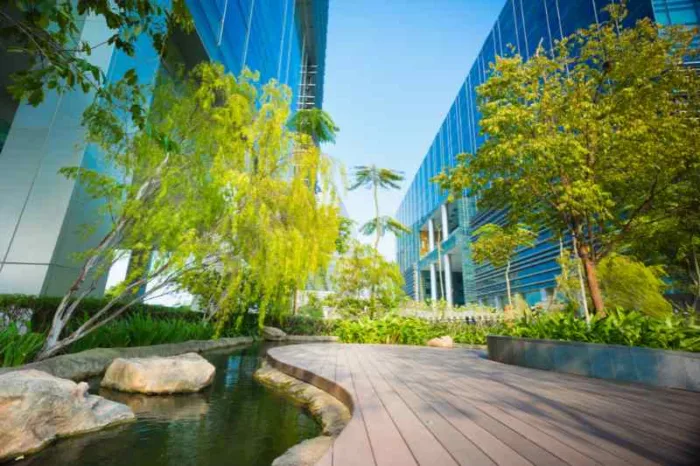Takeaways
- Focusing on creating an energy-efficient office environment will save you money while lowering your carbon footprint.
- You can measure your carbon footprint yourself or hire a company to perform an energy audit of your office.
- The biggest energy consumers in American offices are lighting, refrigeration, ventilation, and cooling systems.
- Five easy ways to lower the carbon footprint of your office include replacing outdated appliances, investing in energy-efficient office lighting, creating an energy-efficient office design, automating your office, and empowering your tenants to recycle as often as possible.
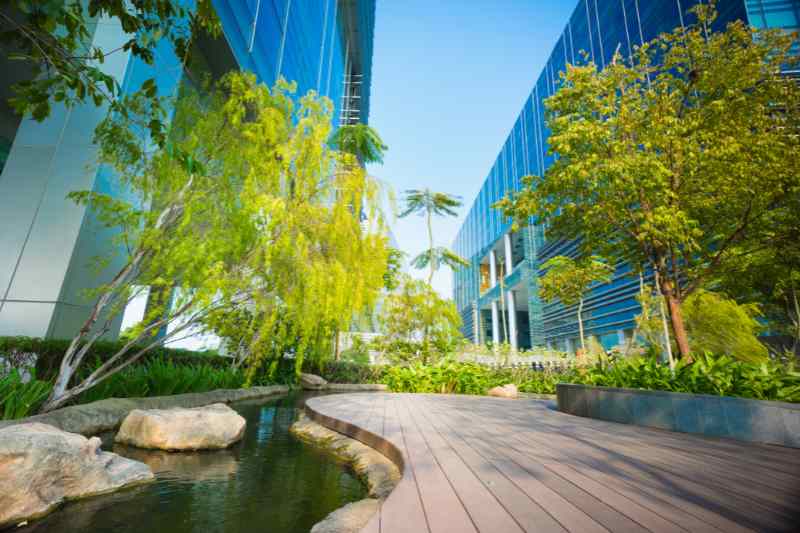
Today’s consumers often opt for electric vehicles, organic produce, and sustainable clothing options. But why stop there? By transforming your office space into an energy-efficient office, you’ll appeal to prospective tenants and please your current ones.
Not only does optimizing your office space for sustainability lower your carbon footprint, but it’ll also save you cash in the process. And luckily, there are a few clear, easy ways to increase your office building’s efficiency.
In this post, we go over how to be more energy efficient in your office, particularly by examining what’s currently using the most energy. Then, we teach you how to save energy at your commercial building. Finally, we go over five easy switches that’ll lower your carbon footprint and save you money.
This post covers:
- How to be more energy efficient in an office
- How can I make my office energy-efficient?
- 5 simple switches to lower your carbon footprint
How to be more energy efficient in an office
The easiest way to be more energy efficient in your office is to examine what’s using the most energy.
To determine what’s using the most energy, get a carbon footprint measurement done. Fortunately, many carbon footprint calculators allow you to measure your carbon footprint yourself in just a few minutes.
If you want a more accurate reading, consider getting an energy audit done. In this case, an energy audit company examines your office in order to determine your overall energy consumption.
What uses the most energy in your office?
When it comes to commercial energy efficiency, there are a few things that universally use the most energy.
According to the U.S. Energy Information Administration, the most dominant user of energy is lighting systems. However, this is followed closely by refrigeration, ventilation, and cooling systems.
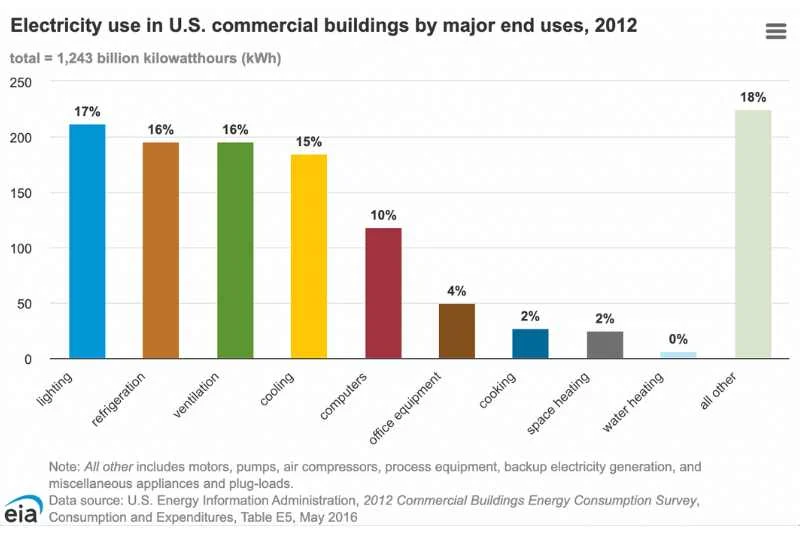
Data source: U.S. Energy Information Administration, 2012 Commercial Buildings Energy Consumption Survey, Consumption and Expenditures
How can I make my office energy-efficient?
There are plenty of energy-efficient devices to invest in to reduce your impact on the environment. However, there are a few things you can do today to create an energy-saving office.
Here are some things you can do every day to save energy at your commercial office:
- Turn off lights in rooms you aren’t using. Additionally, turn the lights off when you leave for the day.
- Make use of natural light instead of leaving lights on when the weather is sunny.
- If you leave your desk for extended periods, turn your monitor off.
- Choose the power management feature on your printer and copy machines.
- Reduce your heating by just one degree to cut fuel consumption.
- Keep up with equipment maintenance — clean fans and vents to increase efficiency.
Learn how sustainable building techniques are implemented:
5 simple switches to lower your carbon footprint
So, you’ve implemented the previously mentioned changes, but want to take it to the next level? There are many easy changes you can make to increase your office building efficiency. These changes take a bit more time and investment, but their impact is huge and leads you closer to becoming carbon neutral.
The five switches are:
- Replace outdated appliances
- Invest in energy-efficient office lighting
- Create an energy-efficient office design
- Automate your office
- Recycle everything
1. Replace outdated appliances
Take a close look at the appliances installed in your office — chances are they’ve been there since you moved in. As a result, they’re probably not energy-efficient devices.
If that’s the case, consider investing in new equipment that’s ENERGY STAR-rated. This means the device has been certified as efficient by the U.S. Environmental Protection Agency. Typically, ENERGY STAR-rated appliances will power off automatically after a period of inactivity.
Simply look for the blue sticker on any appliance to save money on energy bills and lower the carbon footprint of your office.
Some energy-efficient equipment swaps to consider include:
- Refrigerators
- Printers and copy machines
- Dishwashers
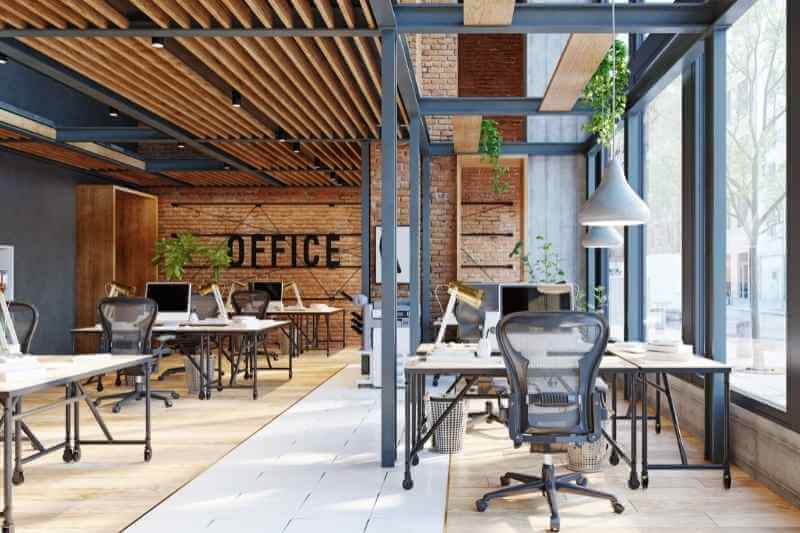
2. Invest in energy-efficient office lighting
A cheaper (and quicker) appliance swap you can make with a short trip to your local hardware store is investing in energy-efficient office lighting.
Most likely, your commercial office has dozens, or even hundreds, of lightbulbs that stay on all day. By opting for LED lighting, you make a huge impact on the environment. In fact, LED lights last up to 25 times longer than incandescent lights, while using 75% less energy.
Further, you can increase your office’s lighting efficiency by investing in occupancy sensors. This smart workplace technology senses when a room is or isn’t being used and adjusts the lighting accordingly.
3. Create an energy-efficient office design
Getting closer to carbon neutrality doesn’t have to be expensive. In fact, you can create an energy-efficient office space without any smart technology.
Create an energy-efficient office design by opting for natural lighting when possible. Further, when the temperature is extremely hot or extremely cold, cover your windows to reduce reliance on your HVAC system.
Encourage your employees to be a part of the change by establishing an energy committee. These groups can focus on planning and executing energy-saving initiatives within your office. Not only will they increase your energy efficiency, but they can also track your energy usage and your office’s greening progress to encourage their coworkers to get involved.
4. Automate your office
Energy-saving automation isn’t restricted to lighting. In fact, energy-efficient office heaters are one of the best ways to reduce your energy consumption.
Smart thermostats are convenient because they can use motion sensors to track the occupancy of a room and change the temperature on their own.
What’s more, smart thermostats allow users to adjust the temperature from their smartphones. As a result, if the office will be empty for an extended period, tenants can adjust the temperature to save energy. Then, before tenants return, they can set the thermostat to something more comfortable.
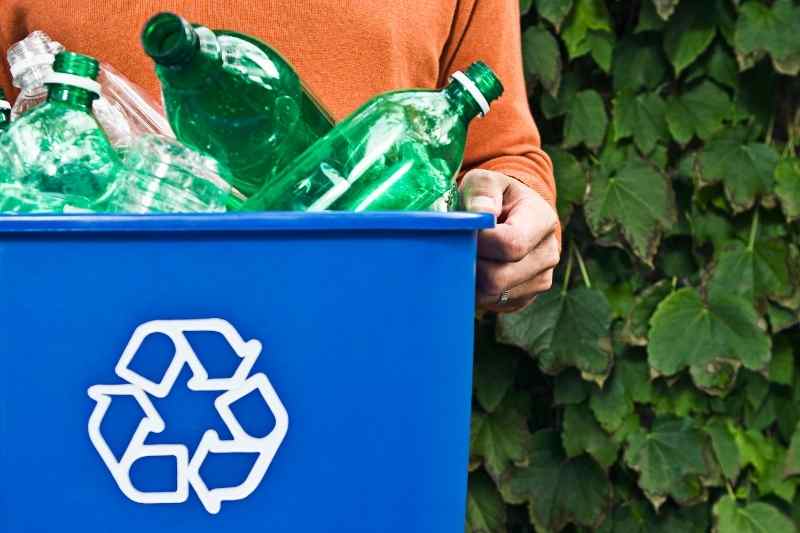
5. Recycle everything
One of the easiest ways to get tenants involved in the energy efficiency process is to encourage office-wide recycling.
Commercial waste management refers to how a commercial property handles all the trash it generates. The average office worker creates around two pounds of paper waste each day. And that doesn’t include the technology waste produced when workers upgrade their devices.
By placing a few recycling bins around the office, you’ll encourage employees to opt to recycle rather than trash their used paper, food wrappers, cans, and cardboard.
And reduce your office’s technology waste by employing responsible recycling of technological devices.
